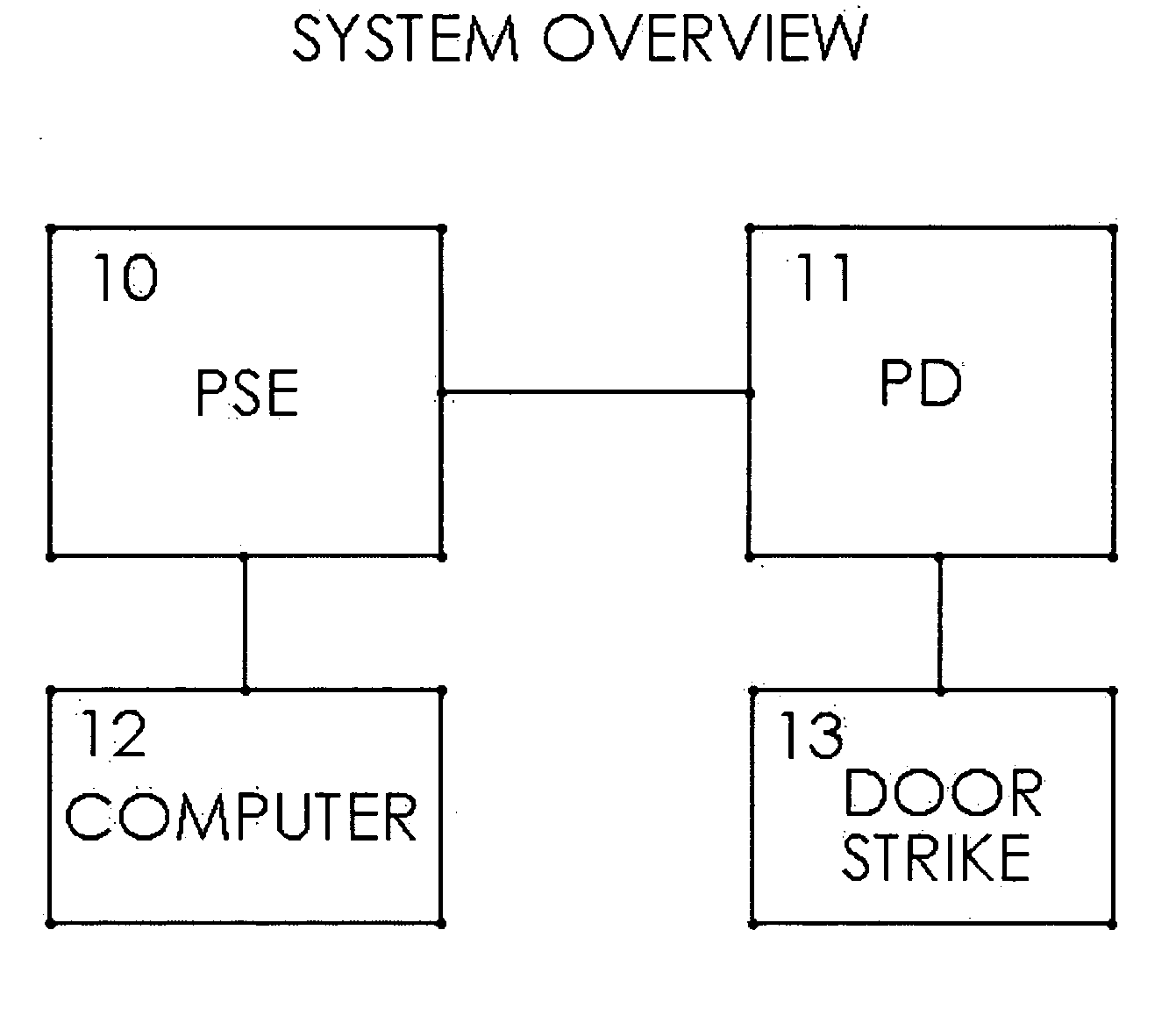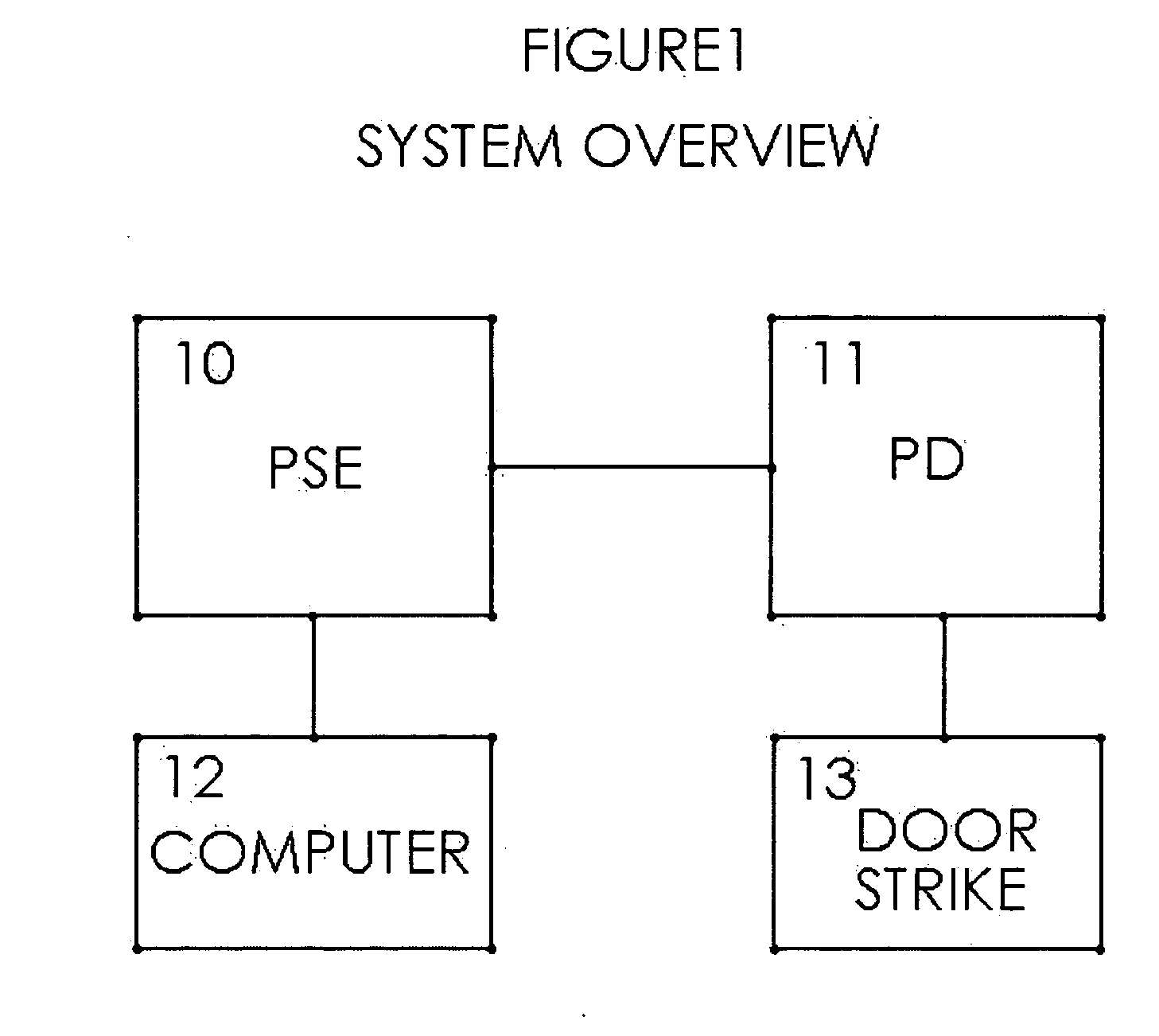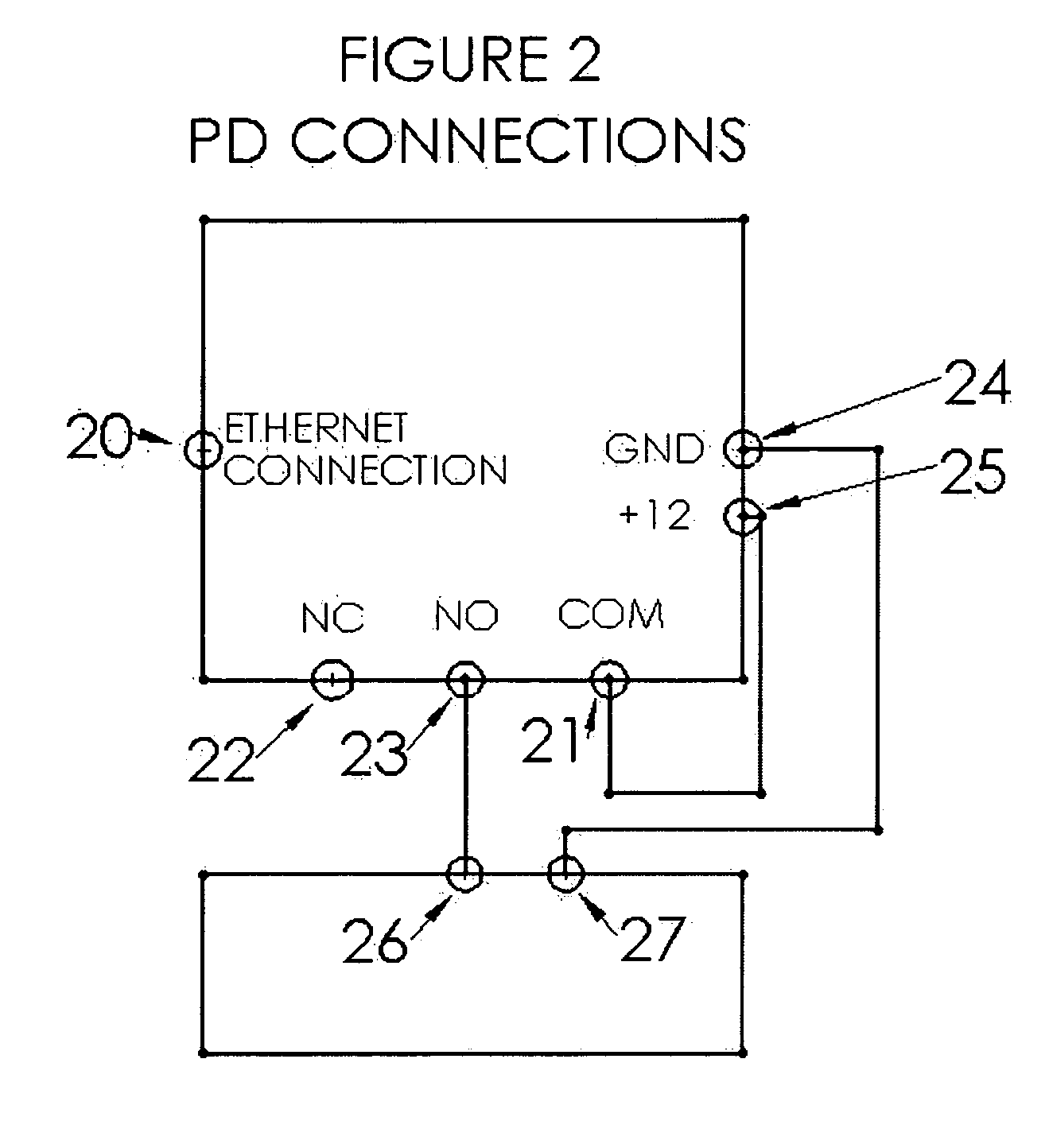Ethernet powered device with an internaly controlled auxiliary power ouput
a technology of auxiliary power and ethernet, applied in the direction of data switching details, data switching current supply, emergency power supply arrangement, etc., can solve the problems of door strike being in open circuit failure, tampered, short circuit, etc., and achieve the effect of more simplified wiring
- Summary
- Abstract
- Description
- Claims
- Application Information
AI Technical Summary
Benefits of technology
Problems solved by technology
Method used
Image
Examples
embodiment
Preferred Embodiment
[0041] Powered device with auxiliary power output (FIG. 1,2)
Description of Invention
[0042]FIG. 1 shows an example of a system implementing a Powered Device (PD) (11) capable of powering and controlling a door strike (13). The PD (11) will often have a built in identification input device such as a barcode, RF card, or fingerprint reader. The Power Sourcing Equipment (PSE) (10), is typically a server or switch, which is Power Over Ethernet (POE) compliant. The host computer (12), is a typically a standard computer or server which is connected to the PSE (10) via ethernet cable. The Powered device (PD) (11), is connected to a port on the PSE (10) via ethernet cable. The Powered device (PD) (11), is connected to the door strike (13) via wiring of sufficient size to carry the voltage and current specified by the particular door strike (13). The door strike (13) would typically be installed in a fashion to control access of a door or turnstile.
[0043]FIG. 2 shows s...
second alternative embodiment
[0051] PD with Switch Power Output (FIG. 4)
[0052] This embodiment of the invention is similar to the first example, except the requirement to jumper the auxiliary power output to the to the form C relay is eliminated. The auxiliary power output port should not be energized at all time, but rather only when the door strike (13) requires power for access or access restriction. This switching of the auxiliary power output port on and off could be implemented internally through solid-state means or a standard mechanical relay. The advantage of this configuration is simplified wiring in the installation process and increased tamper resistance.
third alternative embodiment
[0053] PD with Built in Diagnostics
[0054] This embodiment of the invention is similar to the first example, except the diagnostics are contained within the PD (11). In this embodiment the tracking of the configuration states within the PD (11) and the theoretical power drawn from the system being in such a state, is done entirely within the PD (11). The PD (11) can then query the PSE (10) through the ethernet network to the power consumed by the PD (11). If the power consumed is outside predetermined parameters, an error indicator could be displayed on the PD (11) if indicators are available, and an error code could be sent to the main host computer.
PUM
 Login to View More
Login to View More Abstract
Description
Claims
Application Information
 Login to View More
Login to View More - R&D
- Intellectual Property
- Life Sciences
- Materials
- Tech Scout
- Unparalleled Data Quality
- Higher Quality Content
- 60% Fewer Hallucinations
Browse by: Latest US Patents, China's latest patents, Technical Efficacy Thesaurus, Application Domain, Technology Topic, Popular Technical Reports.
© 2025 PatSnap. All rights reserved.Legal|Privacy policy|Modern Slavery Act Transparency Statement|Sitemap|About US| Contact US: help@patsnap.com



